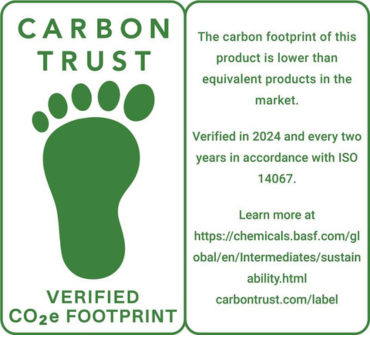
CHALLENGE
How can manufacturers prove they are reducing their carbon footprint?
Plastics, paint, pharmaceuticals, plant protection agents – the products that are made from chemical substances are endless. At its core, however, a reliance on fossil-based feedstocks and energy-intensive purification has culminated in the industry becoming the ‘single biggest industrial user of fossil fuels.’
As an indispensable element to a wide range of value chains, chemical manufacturers must get to grips with their carbon footprint. Among them is BASF, one of the world’s largest chemical companies. Through product innovation, the manufacturer aims to move towards its Net Zero target, reduce its dependence on fossil fuels and meet growing customer demand for lower CO2e solutions. To reduce emissions, BASF invested in renewable energy, biomass materials, lower carbon processes and a dedicated carbon calculator; with these investments, BASF aims to create chemical products with a smaller footprint.
To differentiate itself, BASF wanted to back up the claims of its product range. For this, the company needed an independent party that understands the intricacies of carbon in chemicals and could compare BASF's product carbon footprints to similar products in the industry.
SOLUTION
Proving the validity behind BASF’s carbon calculations with the Carbon Trust label
A proliferation of stock keeping units (SKUs) alongside chemicals’ vast variants makes carbon calculations of chemicals a complex undertaking. Since BASF had already created a dedicated tool to measure its product emissions, the focus now was to ensure the tool’s inputs, methodology and outputs aligned with international best practices. To help BASF communicate the emissions of its new product range with confidence, we:

By achieving this verification, BASF can use the Carbon Trust label to confidently communicate that the verified products have a lower carbon footprint than the market average.
IMPACT
Using lower carbon products as a competitive driver
BASF shows how emissions reductions are possible even in a hard-to-decarbonise industry. The company has since then shared its calculation methodology with the wider industry. In doing so, it encourages and supports more companies to measure, communicate and reduce the emissions associated with chemical products.
The verification positions BASF’s product range in a more sustainable light and demonstrates that its carbon impact is lower compared to other products on the market. At the same time, it provides customers with clear and accurate insights into the carbon impact of BASF's products, which is crucial as BASF’s chemicals are part of almost all existing value chains. The label:
1 Since BASF is a B2B company, the footprints were verified on a cradle-to-gate basis. This scope measures the total greenhouse gas emissions from the production of raw materials through to product manufacture right up to the factory gate.







